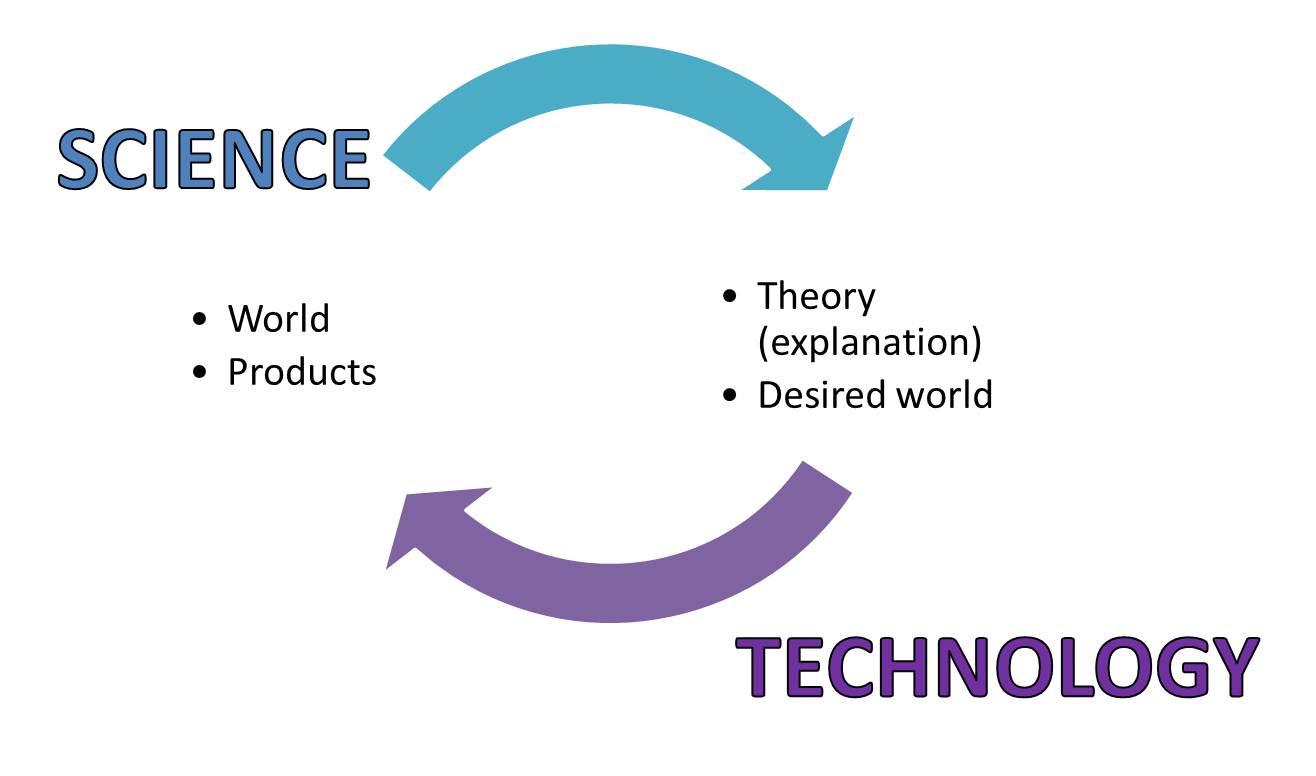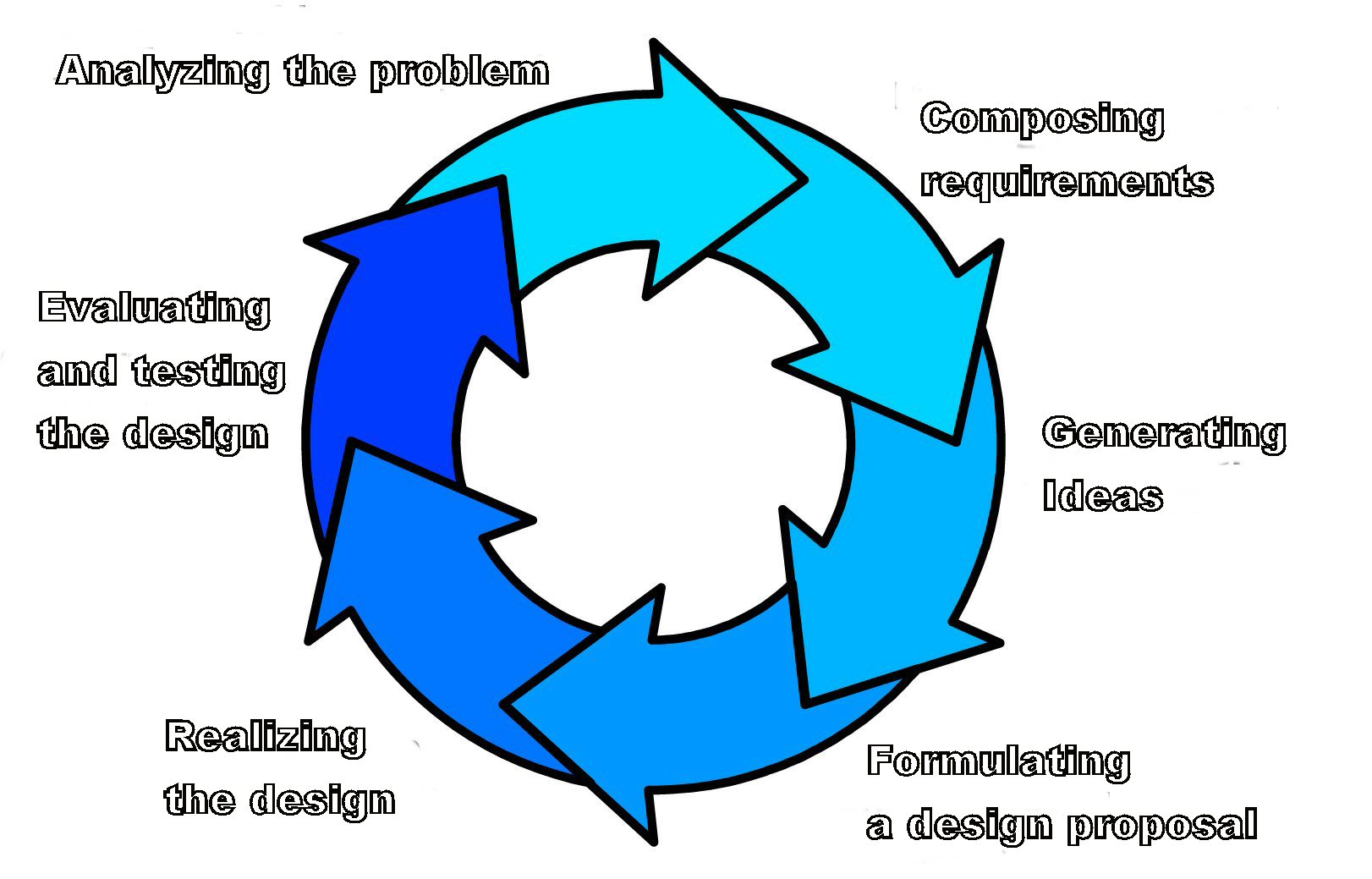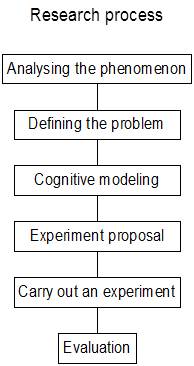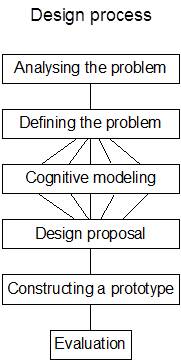Industrial Content Knowledge
An important aspect of applying science concepts in industry is the goal: in industry most of times the goal is the design of new products or processes, while in science the goal is new knowledge.
A classical idea about the difference between science and technology is the following.
Within science we try to understand the world and within technology we try to change the world. Scientists explore the physical world and develop theoretical models for explanation. This is the arrow from left to right. Engineers or product developers describe a desired world and develop corresponding technical products. This is the arrow from right to left.

Figure 1: Schematic to describe a relationship between science and technology
The professional practice however is more complex than this scheme suggests. Scientists design technical systems for their research and often engineers do scientific research as part of their product design.
1. Design versus research
Students should be involved in both research projects and design projects. Through these activities they become familiar with the characteristic ways of thinking and problem solving approaches in both science and technology. Science teachers have traditionally sufficient experience with research tasks, but not at all with design tasks. What are the differences and similarities?
As mentioned earlier there is a clear difference in objectives. The objective of science is understanding the physical world, while the objective of technology is changing that world. Connected to this we can say that the yield of a research activity is knowledge, while the yield of a design process is a product. We also define ‘quality’ in different ways. Where the quality of research is judged by the correspondence with the facts, we can say that the quality of the design is judged by the correspondence with the needs of the focus-group or client.
For students these differences in objectives between science and technology also reflect possible differences in motivation. Researchers are motivated by (abstract) thinking, curiosity and the wish to gain a fundamental understanding of the physical world. Designers are motivated by doing, by the pleasure of creating things, and the wish to elaborate practical solutions for real (human) problems.
|
|
|
Figure 2: Schematic to compare the research and design process
At first glance the problem solving processes in both domains look similar but there are important differences, especially in the first three stages of the problem solving process (which is in many cases cyclic and not linear as might be suggested by the diagrams!).
- Analysing the problem
A research problem starts with an orientation on a phenomenon: a mismatch between the theory and the observed facts.
Design problem starts with an orientation on people: a mismatch between the real world and the needs of a focus group or client.
- Defining the problem
Design problems are ill defined, while research problems are not. Goal criteria are not only ill defined but sometimes even contradictory (Middleton, 2000 [?]). As a consequence design problems include much more uncertainties then research problems.
- Cognitive modeling
The search for possible solutions starts after the problem is defined.
In research we formulate hypotheses and use existing (school) theory to construct a theoretical model, which enables us to explain the observed facts. The model is used to predict possible outcomes for experimental verification or falsification.
In design the search for solutions is more complex. Where research is dealing with an existing and observable world, in design we are creating a non-existing and not directly observable world. In fact there are many realizable worlds and we don’t now which world will give the best correspondence with the needs. We have to make predictions about the ‘behavior’ of the products to be designed and we never know if we did miss a better solution. In the search for solutions divergent thinking skills are needed.
In the next stages problem solving activities are similar in both domains. In these stages we are concerned with planning, construction and testing ideas. For this kind of activities more vertical thinking skills are needed.

Figure 3. Design cycle
2. Teaching design skills
Based on this analysis we focus in design lessons on the first stages of the design process: problem analysis, problem definition and the search for alternative solutions. Emphasizing on these aspects not only reflects good engineering practice and leads to better designs, but also strengthen the image of technology as a human activity. In this approach doing technology is highlighted as the search for and the realization of concrete solutions for recognizable human needs. These activities not so much require smart and possible narrow minded whiz kids but rather creative students with empathy, communication skills, wide and multidisciplinary interests and a practical mind.
In the phase of analysing the problem students must be able to identify one self with the content of the design task and find answers on questions like “what is the problem?”, “who has the problem?”, “why is it a problem?” and “what do we want to obtain with a possible solution?”. Starting point for design projects is always a recognizable owner of the problem. This is important for the conceptualization of technology as a human enterprise and for the motivation of pupils (especially for girls).
In the phase of problem definition students must be able to gather design requirements from the previous phase and reformulate general described requirements (e.g. from the client) in testable requirements. The result can be seen as a kind of contract. As a design team they accept the assignment to develop a product that satisfies the requirements.
To strengthen the identification one can work with a real or fictive (e.g. teacher) owner of the problem.
In the phase of generating ideas (cognitive modelling) students must be stimulated to consider several solutions. Generating different solutions extends the chance to find one fitting the requirements. This is an important part of the design process. It requires divergent thinking. To stimulate this kind of thinking students are asked to identify sub- problems and find several solutions for each sub-problem. The results are presented in a so-called “table for ideas”, which serves as a starting point for formulating a design proposal.
In their design proposal students have to take into account the list of requirements and the available materials and facilities at school. After approval by their teacher they elaborate the design proposal in a working prototype, examine to what extent the requirements are met and suggest improvements and modifications. It is not expected that students redesign their prototype. For reporting and process control a portfolio document is used.
3. Types of activities with a link to industry
We can distinguish different type of activities with a link to industry and tried to create a classification from low to high.
- The context of the activity has a link, but the activity is rather traditional. In such an activity for example the application of science content in a certain product or process is demonstrated.
- In the activity first an industry is studied, preferable by a site visit or studying or another good introduction, and challenges faced in that industry are used to introduce science activities. For instance ‘safety in cars’ lead to study the role of crushing zones, which will lead to related physics concepts.
III. Analysing an industries main product or process based on a site visit and study of both the science content and the design process/choices that have been made. Students should experience different solutions for the same design task.
IV. A design task given by the unit. Students will need to follow all steps in a design process. During the process they will need to learn science concepts and do experiments.
- A design task with a customer. In this case contacts with industry leads to a design problem.

